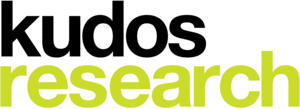“It was like trying to sell stuff to people while they’re hanging out with their friends at the bar,” Forrester analyst Sucharita Mulpuru told Bloomberg.
But Facebook needs retailers and their million-dollar ad budgets if it ever hopes to justify its IPO price. And so last week, Facebook held a conference for retailers in the company’s UK headquarters. Kicking off proceedings was Facebook VP of marketing services Carolyn Everson, who urged retailers to remember that “the ability to create real, loyal, brand advocates is right at your fingertips”. Retail, she said, is the vertical most suited to capitalise on the opportunities presented by social media because it can help make retail even more personal, “which is what every retailer wants to achieve”.
Putting customers first
During the course of the day, two panel debates sought to emphasise the role that anonymised user data and detailed ad metrics could play in boosting the ROI of Facebook ads.
The first was chaired by Gavin Sathianathan, Facebook’s vertical lead for multichannel retail in EMEA. Here, data firms argued that data modelling and interpretations had become much more sophisticated in recent months, enabling greater personalisation opportunities for brands to tap into.
“There is so much big data on the site, enabling brands to empower users by identifying user personality traits and finding unique ways to build relationships with these advocates”
Brands need to take a customer-centric view when using social data, according to Max Jolly, global head of digital at Dunnhumby and Experian head of digital analytics Robin Goad.
Jolly said: “Facebook has a wealth of data ready to make use of in compliance with regulations. What’s important is to think ‘customer first’, adding a layer of interpretation and utility to identify what they’d find relevant or useful.”
By analysing the contextual data provided via the site’s advertising platform, brands are able to ensure that they are talking to the right people and track engagement levels and approaches that are best at supplying them with brand advocates.
Goad said it was important for a brand to find the right trade off with customers when using social data or risk making them uncomfortable. “You must earn the customer’s trust and engage with them based on what they tell you. Then you get the full picture and it’s easier to dissect later for future communications that are likely to prompt an interaction.”
Doing this well, the panel argued, would create a “network of influencers” which is where the brand can really realise the effectiveness of Facebook – beyond it simply being “an engagement tool”, as General Motors called it when pulling its advertising earlier this year.
Kevin Taylor, global audience and vertical strategy insights manager at Facebook, said the site’s USP is the wealth of consumer information available to marketers.
“There is so much big data on the site, enabling brands to empower users by identifying user personality traits and finding unique ways to build relationships with these advocates,” he said. “Our own research has shown that the site can drive word of mouth and create new customers through the influence of friends-of-friends and so on.”
Seeing a return
Kathy Dykeman, Facebook’s head of EMEA partner measurement, chaired a second panel debate on how Facebook measurement could help prove ROI for retailers.
Opening the session, Dykeman said: “We realise that retail marketers struggle with social measurement and we have enhanced the level of online engagement information and insights available so that you can understand consumer behaviour and spending patterns better.”
“We realise that retail marketers struggle with social measurement and have enhanced the level of online engagement information and insights available so that you can understand consumer behaviour and spending patterns better”
She cited recent examples where insights helped prove the ROI of Facebook ads including analysis of Christmas Facebook ad activity for Nutella Deutschland by GfK which showed that Facebook was attributable to 15% of sales and 3.8 million new followers of the campaign, who had not seen it on TV – equivalent to 29% exclusive reach. Meanwhile, a ComScore study for Asos found that Facebook paid impressions drove a 130% uplift in online sales among those exposed to a Facebook campaign over a one month period.
Vince Blaney, account director at Millward Brown, said: “Demand for proven results using social media are understandably high. From our perspective, it’s important to look at the campaign as a whole and identify the objectives of the activity from the start. The danger is to over-amplify expectations.”
Mike Shaw, director of marketing solutions at ComScore, said that: “The key to getting Facebook investment right is knowing who your audience is and tracking it all the way. It can’t just be blind hope that fans will like and then make a purchase somehow. You need to be assessing longitudinal date over time, so that you can monitor and evaluate incremental conversations and get the measures you want back at the end.”
Meanwhile, Facebook this week formed a partnership with data company Datalogix to enable it to track whether people who see ads on the social networking site end up buying the relevant products in stores. And if there’s one ROI metric retailers understand more than most, it’s cash ringing through the tills.








0 Comments